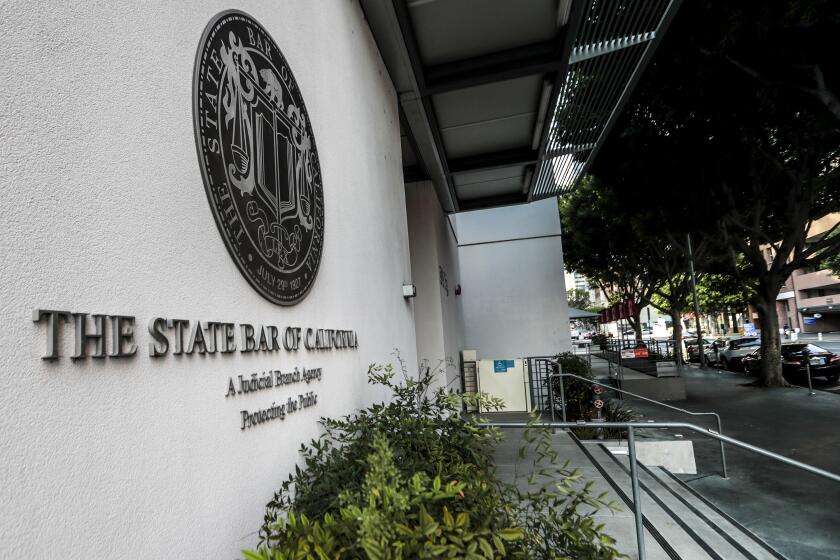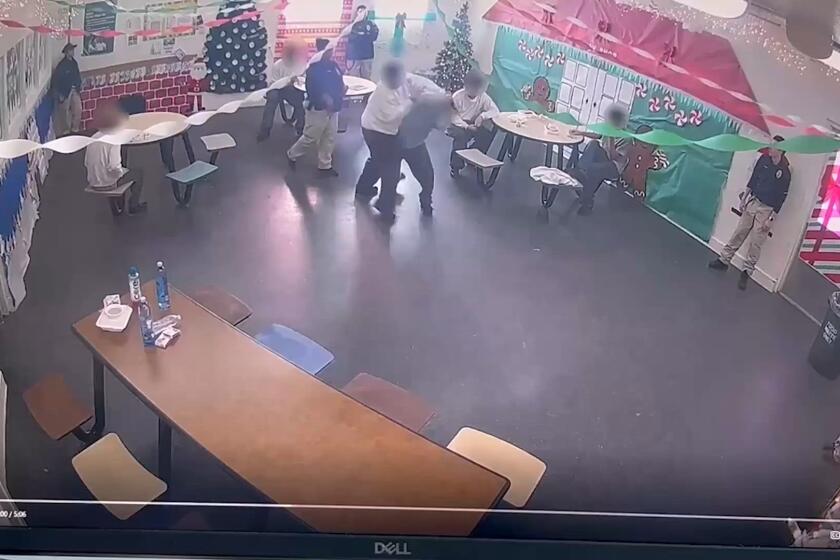Surge in Killings Stuns Compton
- Share via
Compared to the near-record pace of homicides in Compton last year, 2006 had been remarkably quiet. Through early July, this city that has long struggled with gang violence had recorded only 13 gang-related homicides, compared with 38 for the same period the year before.
Then came last week. Seven people were killed in eight days either in or near the city limits -- four of them shot to death on Saturday. The victims included a 72-year-old man and 15-year-old boy.
Between Friday night and Sunday, 20 shootings were reported in the 10-square-mile city that’s home to about 96,000 people.
Two girls, 2 and 3 years old, were among those shot and injured in gang activity that Los Angeles County sheriff’s officials say can be traced to numerous rivalries -- and was probably made worse by a heat wave that drove many people outdoors.
In addition to the Compton killings, nine other homicides took place over the weekend in areas patrolled by Los Angeles County sheriff’s deputies, officials said.
“Any time you have four murders in one city in one weekend, that’s an awful lot,” said Capt. Ray Peavy, who heads the department’s homicide unit. “It was just an incredibly violent weekend. Theoretically, if you have 20 shootings you could have 20 murders if their aim was a little bit better.”
The high toll reverberated throughout the community, as well as in the Sheriff’s Department, where many officials had taken pride in the dramatic downturn in shootings and killings in Compton since a task force was put in place earlier this year by Sheriff Lee Baca.
Recently, however, a number of deputies and investigators left the task force to take promotions or were transferred to other areas, said Capt. Mike Ford, who heads the countywide gang unit.
“The numbers dwindled just a little bit,” Ford said Monday. “We’ve been in meetings today and we now plan to replace those bodies to the highest number we had working out of Compton, effective by the end of this week.”
The recent reduction in deputies, some officials said, didn’t go unnoticed in the community.
“I think the crooks are very aware of who is on the street and who is not,” Peavy said. “It’s just like with a little kid -- give an inch, they’ll take a mile. They think: ‘Last week when I did that I got pulled over and this week I got away with it.’ And then it escalates to what we saw this weekend.”
Compton City Manager Barbara Kilroy said city officials are very supportive of the sheriff “bringing back the full complement of the gang suppression team.”
“The team had been quite effective,” she said. “It indicates this is an area of the county where the sheriff really needs to have the kind of gang suppression effort that they had over the beginning of the year on a longer term basis.”
When Baca initially moved resources to Compton from other parts of the county, he said he had a moral imperative to act after months of rising violence there. By 2005’s end, more than 80 people had been killed in Compton or unincorporated areas within blocks of the city border -- the vast majority gang-related.
Compton Mayor Eric Perrodin, often a harsh critic of the Sheriff’s Department, said at the time that he was thankful for the help. He noted at a City Council meeting in January that Baca risked alienating the county Board of Supervisors by shifting his already limited resources to a poor city.
Capt. Eric Hamilton, who heads the Compton station, said even with the weekend troubles, serious and violent crime remains way down compared to last year. Through July 22, 2005, there had been 417 reports of aggravated assaults with a firearm. This year, the total through the same period was 272. In addition, Hamilton said there has been a reduction in burglary, larceny and vehicle theft.
He remains hopeful that homicides in the city can be kept near or below the 39 reported in 2004 -- the lowest total for Compton in two decades.
“We were lucky and obviously it made a difference and saved some lives,” Hamilton said of Baca’s decision to shift resources to Compton. “But we said that from the very beginning they weren’t going to be permanent items. They made a difference, but I think if you want a long-term impact we need to consider adding considerable new resources.”
The cash-strapped city contracts with the sheriff for 78 patrol deputies to police an area that includes about 57 known street gangs and has long had one of the highest homicide rates in the country. The cost of the contract is about $14 million a year and city officials say they are struggling to meet a recent increase in the sheriff’s rate, much less find funds for additional officers.
“It becomes very difficult when you’re looking at 7% and higher annual increases for the same staff,” Kilroy said. “Our bill for next year went up $750,000 without any increase in staff.”
Community leaders and sheriff’s officials said they believe the rash of weekend violence disguises the progress made over the last several months.
Peavy, the head of the homicide unit, said investigators have solved about one-third of the homicides this year, meaning prosecutors filed charges in the cases, and are on track to arrest suspects in another third.
Of the 44 homicides last year, including gang and non-gang crime, “year to date I think we’d solved eight of them, so we’re doing much better,” he said.
That has been possible, in part, because law enforcement officials have had increased cooperation from people willing to step forward to say what they witnessed or through anonymous tip lines.
Councilman Isadore Hall III said he remains optimistic about the city’s future.
In addition to the increase in deputies provided by Baca, Hall said community outreach efforts to mobilize block clubs and encourage residents to speak up about crime have made a difference.
At a City Council meeting scheduled for today, Hall said elected officials plan to talk about what can be done to immediately stem the surge in violence.
“I’m still thankful that we are nowhere near where we were last year,” he said. “We aren’t going to sit on our duffs and wait for crime to accelerate before we act. I don’t want the community to get comfortable with the kind of violence we saw over the weekend.”
More to Read
Sign up for Essential California
The most important California stories and recommendations in your inbox every morning.
You may occasionally receive promotional content from the Los Angeles Times.











